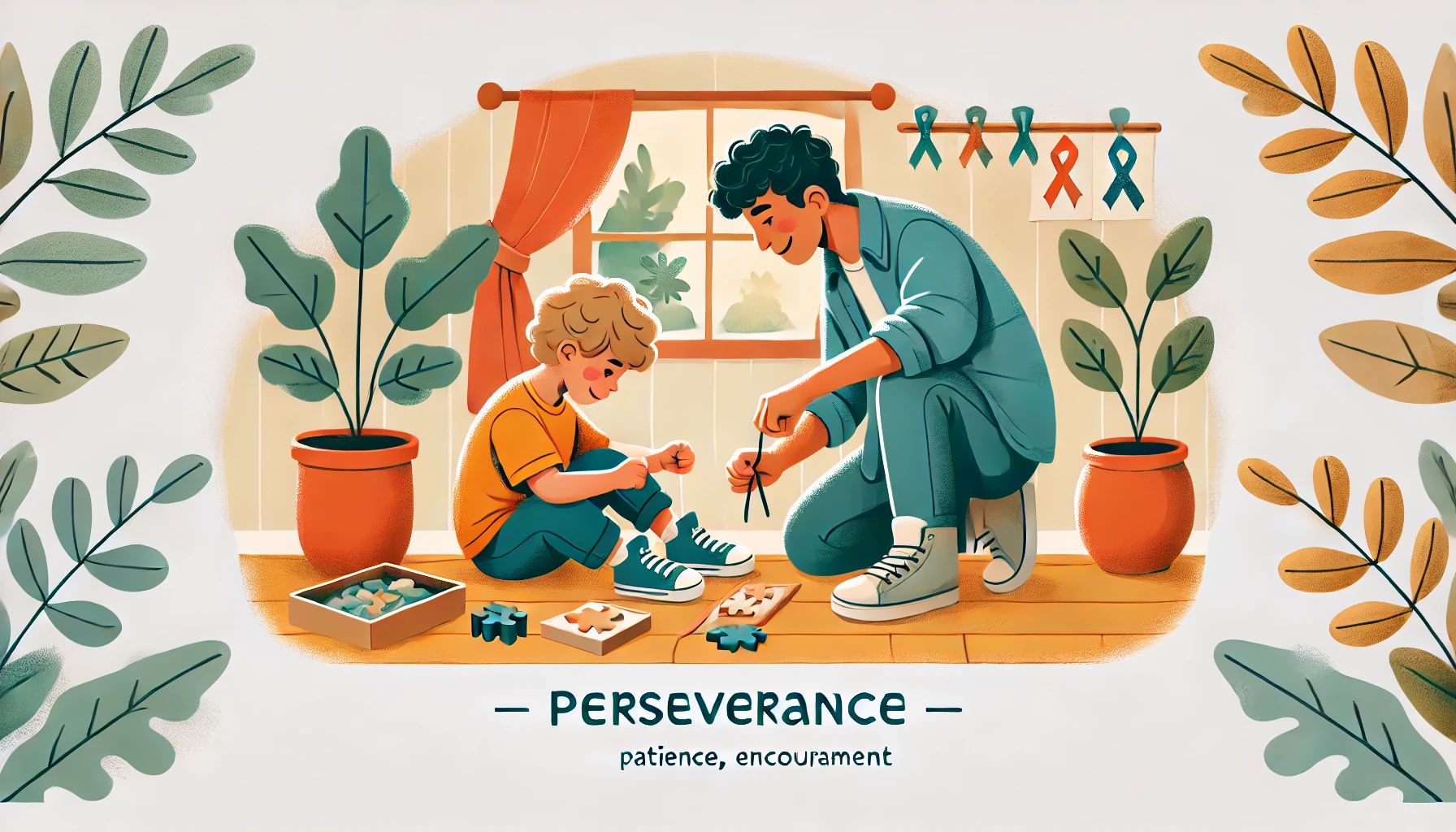How to Teach Young Children About Perseverance and Not Giving Up
Perseverance is a key life skill that helps children develop resilience, problem-solving abilities, and confidence in their abilities. Teaching young children to keep trying, even when things get difficult, builds a growth mindset and prepares them for future challenges. Parents can encourage perseverance through supportive language, engaging activities, and real-life experiences. In this article, we’ll explore practical ways to help children learn the value of persistence.
Why Teaching Perseverance is Important
- Encourages resilience – Helps children bounce back from challenges.
- Develops problem-solving skills – Teaches kids to find new ways to succeed.
- Builds confidence and self-esteem – Shows that effort leads to progress.
- Improves patience and focus – Helps children stay committed to tasks.
- Prepares for lifelong success – Fosters a mindset of determination and learning.
1. Model Perseverance in Everyday Life
Children learn persistence by watching how adults handle difficulties.
Activity Idea:
- Share your struggles and how you overcame them: “I had trouble fixing this, but I kept trying, and now it works!”
- Stay calm and positive when facing setbacks, showing that challenges are normal.
- Praise effort in yourself and your child: “You worked so hard on that puzzle—great job not giving up!”
What Kids Learn:
- That challenges are a part of learning and growing
- How effort and persistence lead to success
- That making mistakes is okay as long as they keep trying
2. Use Encouraging Language to Reinforce Effort
Positive words help children see perseverance as a valuable trait.
Activity Idea:
- Replace “You’re so smart” with “You worked really hard on that!”
- When they struggle, say “Keep going! You’re getting better every time.”
- Teach the phrase “I can’t do it… yet!” to encourage a growth mindset.
What Kids Learn:
- That effort matters more than instant success
- How to stay positive even when things are hard
- The importance of a learning mindset over perfection
3. Introduce Challenges That Require Persistence
Giving children tasks that take time to master builds patience and determination.
Activity Idea:
- Work on puzzles, LEGO sets, or building blocks that require problem-solving.
- Encourage them to learn a new skill, like tying shoelaces or riding a bike.
- Start a gardening project, where they care for plants and wait for them to grow.
What Kids Learn:
- That perseverance leads to accomplishment
- How to break big tasks into small, manageable steps
- The reward of sticking with something until they succeed
4. Read Stories About Perseverance
Books help children see examples of persistence and determination in action.
Activity Idea:
- Read The Little Engine That Could and discuss how effort led to success.
- Explore Giraffes Can’t Dance and talk about how practice helps us improve.
- Ask, “What would have happened if the character gave up?”
What Kids Learn:
- That everyone faces challenges, but persistence pays off
- How a positive attitude leads to improvement
- The importance of believing in themselves
5. Break Big Goals into Small Steps
Helping children tackle challenges step by step prevents frustration.
Activity Idea:
- If they struggle with learning to tie their shoes, teach one step at a time.
- When working on a difficult puzzle, encourage finding just one piece at a time.
- Use a goal chart to track progress in small milestones.
What Kids Learn:
- That big challenges can be solved by taking small steps
- How patience and persistence go hand in hand
- The importance of celebrating small wins
6. Encourage Problem-Solving Instead of Quitting
Teaching kids to think through problems instead of giving up helps them develop independence.
Activity Idea:
- If they say “I can’t do it”, ask, “What else can you try?”
- Play brain-teaser games where they have to find different solutions.
- Praise effort with “You’re figuring it out! Keep going!”
What Kids Learn:
- That trying different strategies leads to success
- The importance of thinking creatively when facing obstacles
- That every mistake is a step toward improvement
7. Celebrate Effort, Not Just Success
Recognizing persistence encourages children to keep trying, even if they don’t succeed right away.
Activity Idea:
- Say, “I’m proud of how you kept trying, even when it was hard!”
- Have a “Never Give Up” jar, where kids add a bead or sticker every time they try again.
- Ask, “What did you learn from this challenge?” to encourage reflection.
What Kids Learn:
- That effort is valuable, no matter the outcome
- How to build confidence in their abilities
- That trying again is always worth it
8. Be Patient and Allow Them to Struggle
Letting children work through challenges instead of rushing to help builds resilience.
Activity Idea:
- If they struggle with a task, resist the urge to step in too soon.
- Encourage them to take a deep breath and try again.
- Remind them, “It’s okay to find this hard—you’re learning!”
What Kids Learn:
- That struggling is a normal part of learning
- The importance of working through challenges independently
- That patience and perseverance lead to success
Final Thoughts
Teaching young children about perseverance helps them develop resilience, confidence, and problem-solving skills. By modeling determination, encouraging effort, and creating opportunities for challenges, parents can help children learn the value of persistence and never giving up.
